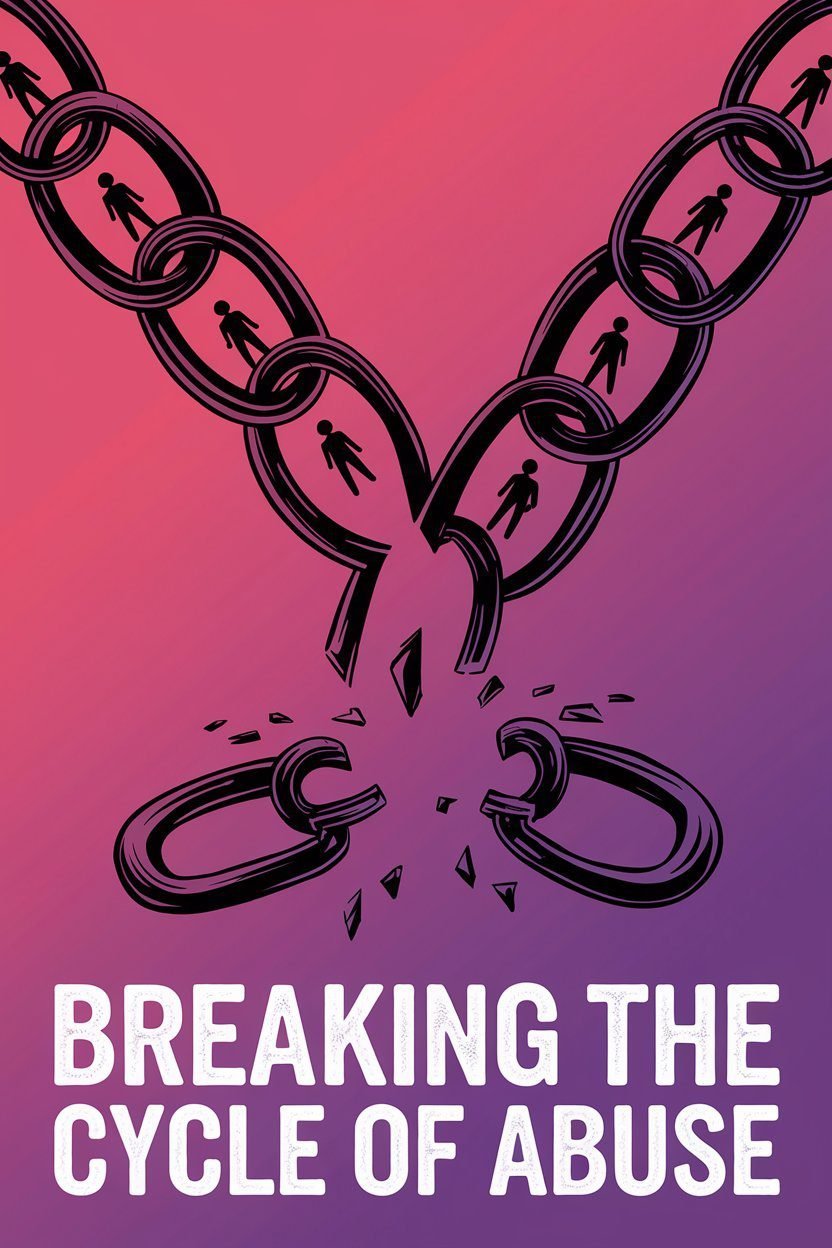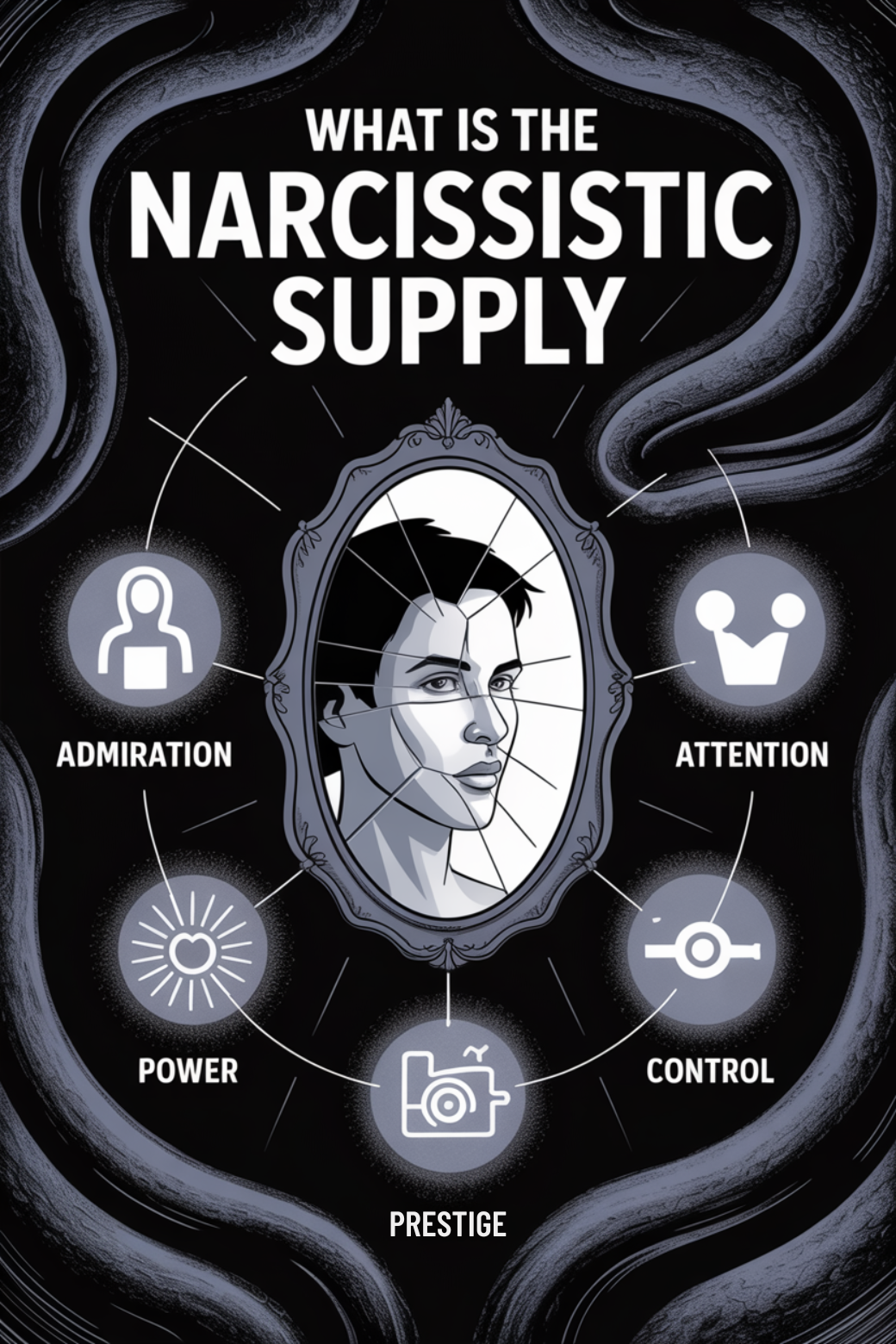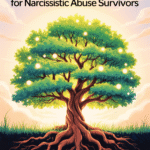Now Reading: What Is the Narcissistic Cycle of Abuse? (The 4 Stages)
- 01
What Is the Narcissistic Cycle of Abuse? (The 4 Stages)

What Is the Narcissistic Cycle of Abuse? (The 4 Stages)
What Is the Narcissistic Cycle of Abuse? (The 4 Stages)
Understanding Narcissism
Narcissism, at its core, is a personality trait characterized by an inflated sense of self-importance, a deep need for excessive attention and admiration, and a lack of empathy for others. Individuals exhibiting narcissistic traits often possess an exaggerated belief in their own superiority and abilities, leading them to seek validation from external sources. This self-centered perspective can manifest in various ways, including manipulative behaviors, entitlement, and a tendency to exploit relationships for personal gain. Understanding these fundamental characteristics is essential for recognizing how narcissism operates in interpersonal dynamics, particularly within the context of what is the narcissistic cycle of abuse.
The narcissistic cycle of abuse comprises four distinct stages: idealization, devaluation, discard, and hoovering. The idealization stage begins with the narcissist showering their partner with affection and admiration, creating an intoxicating bond that can leave the victim feeling cherished and valued. However, this phase is often superficial, as the narcissist’s need for validation drives their behavior. As the relationship progresses, the inherent flaws in this dynamic begin to surface, leading to the devaluation stage, where the narcissist starts to criticize and belittle their partner, eroding their self-esteem and sense of worth. Recognizing what is the narcissistic cycle of abuse can help in understanding these dynamics.
During the discard stage, the narcissist may abruptly end the relationship or emotionally withdraw, leaving their partner feeling rejected and abandoned. This stage can be particularly devastating, as the victim is often left questioning their reality and self-worth. The narcissist may engage in this discard behavior to reinforce their sense of power and control, further entrenching the victim in emotional turmoil. It is during this phase that victims may begin to recognize the abusive patterns inherent in what is the narcissistic cycle of abuse, yet the emotional scars can make it difficult to break free from the cycle.
The final stage, hoovering, represents a manipulative tactic employed by the narcissist to draw the victim back into the relationship, often after a period of silence. This stage can involve promises of change, expressions of remorse, or even displays of affection that mimic the idealization phase. Victims may find themselves torn between the hope for a healthier relationship and the reality of the narcissist’s manipulative nature. Understanding what is the narcissistic cycle of abuse during this stage is crucial for victims as it highlights the cyclical and unpredictable nature of narcissistic abuse, making it imperative for them to remain vigilant and prioritize their emotional well-being.
Recognizing the signs of narcissism and the associated cycle of abuse is a vital step in reclaiming personal power and addressing the damage inflicted by such relationships. Education about the traits and behaviors of narcissists can empower individuals to set boundaries, seek support, and ultimately escape what is the narcissistic cycle of abuse. By fostering awareness and understanding, victims can begin to heal and cultivate healthier relationships, breaking free from the confines of narcissistic influence.
Defining the Cycle of Abuse
The cycle of abuse is a complex and often insidious process that can occur in relationships characterized by narcissistic behavior. It typically unfolds in four distinct stages: idealization, devaluation, discarding, and hoovering. Understanding these stages is crucial for recognizing the patterns of manipulation and control that define the narcissistic cycle of abuse. Each stage serves a specific purpose for the abuser, reinforcing their need for power and validation while leaving the victim in a state of confusion and emotional turmoil.
In the first stage, idealization, the narcissist often presents themselves as the perfect partner, showering the victim with affection, compliments, and attention. This stage can be intoxicating, as the victim feels special and valued. However, this idealization is superficial and serves as a means for the narcissist to gain control over the victim. The initial charm can create a dependency, leading the victim to believe that the relationship is healthy and loving. This stage sets the stage for the eventual shift into devaluation, where the narcissist’s true nature begins to surface.
The devaluation stage marks a stark contrast to the idealization phase. As the relationship progresses, the narcissist begins to criticize, belittle, and undermine the victim. This behavior can be subtle at first, such as through backhanded compliments or dismissive remarks, but it escalates over time. The victim, confused and hurt, may find themselves questioning their worth and reality. This stage is particularly damaging, as the victim often internalizes the negative feedback, leading to a decline in self-esteem and self-worth.
Following devaluation, the discarding stage occurs, where the narcissist completely withdraws their affection and may abruptly end the relationship. This can leave the victim feeling abandoned and devastated. The sudden shift often leads to a cycle of self-blame and guilt, as the victim struggles to understand what went wrong. The discarding stage reinforces the narcissist’s control, as they can easily move on to a new target while leaving the victim in a state of chaos and emotional distress.
The final stage, hoovering, involves the narcissist’s attempts to re-establish contact with the victim after the discard. This stage can manifest through various tactics, such as reaching out with false apologies, love bombing, or creating scenarios that evoke sympathy. The goal of hoovering is to pull the victim back into the cycle of abuse, allowing the narcissist to regain the emotional supply they thrive on. Recognizing this stage is vital for victims, as it highlights the deceptive nature of the narcissist and the importance of setting firm boundaries to avoid falling back into the cycle. Understanding these stages is essential for anyone looking to break free from the toxic patterns of a narcissistic relationship.
Importance of Recognizing the Cycle
Recognizing what is the narcissistic cycle of abuse is crucial for anyone seeking to understand the dynamics of their relationship with a narcissist. This cycle typically consists of four distinct stages: idealization, devaluation, discard, and hoovering. By identifying these stages, victims can gain clarity about their experiences and begin to disentangle themselves from the emotional turmoil that accompanies such relationships. Understanding the cycle empowers individuals to recognize patterns of behavior, which is the first step toward healing and recovery.
The importance of recognizing the cycle lies in its ability to illuminate the manipulative tactics employed by narcissists. During the idealization stage, the victim is often showered with attention and affection, creating a false sense of security and love. This phase can be intoxicating, leading individuals to overlook red flags or dismiss any doubts they may have. Acknowledging this stage is essential as it helps individuals understand how the initial charm can quickly give way to the devaluation stage, where the narcissist’s true colors emerge, often leaving the victim feeling confused and devalued.
In the devaluation stage, the narcissist begins to undermine the victim’s self-worth, often through insults, gaslighting, and emotional manipulation. Recognizing this shift is vital for victims, as it serves as a wake-up call that the relationship is unhealthy. By understanding that this behavior is part of a pattern rather than a reflection of their worth, victims can begin to reclaim their sense of self and resist the emotional pull that the narcissist exerts. This knowledge fosters resilience and equips individuals with the tools to combat the psychological effects of abuse.
The discard stage represents a painful culmination of the cycle, where the narcissist may abruptly end the relationship, leaving the victim in a state of shock and abandonment. Recognizing this stage can help individuals process their feelings of loss and betrayal. Awareness of the cyclical nature of the relationship can provide a framework for understanding that the end of the relationship is not a reflection of the victim’s value but rather a manifestation of the narcissist’s inability to maintain genuine connections. This understanding can facilitate the grieving process and promote emotional healing.
Finally, the hoovering stage often involves the narcissist attempting to re-establish contact, drawing the victim back into the cycle. Recognizing this tactic is crucial for ensuring that individuals do not fall prey to the same manipulations again. By understanding the entire cycle, victims can develop strategies to protect themselves and establish boundaries. This recognition fosters empowerment, allowing individuals to break free from the cycle and begin their journey toward recovery, ultimately leading to healthier relationships in the future.

Chapter 2: Stage One – Idealization
The Honeymoon Phase
The honeymoon phase in the narcissistic cycle of abuse is often characterized by an initial period of idealization and intense affection. During this stage, the narcissistic partner may shower their victim with love, attention, and compliments, creating a sense of euphoria that can be intoxicating. This idealization is not merely a reflection of genuine affection; rather, it serves as a tactic to establish control and attachment. The victim may feel as though they have found their soulmate, as the narcissist crafts an image of perfection that is designed to captivate and disarm.
This phase can be confusing, as the love and attention seem genuine, masking the underlying manipulative nature of the relationship. The narcissist often mirrors the desires and needs of their partner, creating an illusion of compatibility. In this stage, the victim may overlook red flags or dismiss any concerns they have, believing that the relationship is fulfilling and their partner is truly invested. This intoxicating experience can lead to a deep emotional bond, making it difficult for the victim to recognize the potential for future abuse.
As the honeymoon phase progresses, the narcissist may begin to subtly introduce elements of control, often framed as care or concern. They may dictate what the victim should wear, who they should associate with, or how they should behave, all while maintaining the facade of love and support. This gradual shift can be disorienting, as the victim is still caught in the haze of affection and may rationalize the narcissist’s behavior as normal or even protective. The initial love bombing serves to anchor the victim in a sense of dependency, making it harder to break free from the cycle.
Eventually, the idealization of the honeymoon phase will give way to devaluation, marking a critical shift in the relationship. As the narcissist’s insecurities and need for control emerge, the once adoring demeanor may turn critical and dismissive. The victim, having been lulled into a false sense of security, may struggle to understand the drastic change in behavior. This dissonance can lead to confusion and self-doubt, as the victim grapples with the stark contrast between the initial affection and the ensuing emotional turmoil.
Understanding the honeymoon phase is crucial for recognizing the dynamics of the narcissistic cycle of abuse. It highlights the manipulative tactics employed by the narcissist to secure their partner’s loyalty and attachment. By acknowledging the characteristics of this phase, victims may begin to identify patterns in their relationships, fostering awareness that can empower them to break free from the cycle. Awareness of the honeymoon phase is the first step toward recognizing the broader implications of narcissistic abuse and reclaiming one’s sense of self and agency.
Characteristics of Idealization
Idealization is a crucial stage in the narcissistic cycle of abuse, characterized by the intense admiration and affection that a narcissist initially directs toward their target. During this phase, the victim is often placed on a pedestal, receiving an overwhelming amount of attention and validation. This idealization serves as a powerful tool for the narcissist, allowing them to create an illusion of a perfect relationship. The victim feels special and unique, believing that they are the sole focus of the narcissist’s affection. This experience can be intoxicating, leading the victim to overlook potential red flags and unhealthy patterns.
One of the defining characteristics of idealization is the projection of unrealistic expectations onto the victim. The narcissist often attributes extraordinary qualities to their partner, viewing them through a distorted lens that exaggerates their strengths while ignoring their flaws. This projection serves to fulfill the narcissist’s need for admiration and validation, as they seek to surround themselves with individuals who reflect their own inflated self-image. The victim, in turn, may internalize these projections, striving to meet the idealized version of themselves that the narcissist has created. This dynamic can lead to a significant shift in the victim’s self-perception and self-esteem.
The intensity of idealization can also create a sense of urgency and dependency in the victim. As the narcissist showers their partner with affection and attention, the victim may feel compelled to reciprocate, often at the expense of their own needs and boundaries. This imbalance reinforces the narcissist’s control, as the victim becomes increasingly reliant on the narcissist’s validation for their sense of worth. The initial stages of idealization are often marked by fervent declarations of love and commitment, further binding the victim to the narcissist and solidifying their emotional investment in the relationship.
Another characteristic of idealization is its ephemeral nature. While the initial phase is characterized by admiration and affection, it is often followed by a swift transition into devaluation. Once the victim has become emotionally attached and invested, the narcissist may begin to withdraw affection and introduce criticism, leading to confusion and distress for the victim. This cycle of idealization followed by devaluation creates an emotional rollercoaster that keeps the victim off-balance. The victim may find themselves desperately trying to regain the idealized version of the relationship, leading to a toxic pattern of behavior where they seek to please the narcissist at all costs.
Ultimately, understanding the characteristics of idealization in the context of the narcissistic cycle of abuse is essential for recognizing and breaking free from these destructive patterns. By identifying the signs of idealization, victims can begin to disentangle themselves from the narcissist’s manipulative tactics and reclaim their sense of self. This awareness encourages individuals to set healthy boundaries and prioritize their own emotional well-being, paving the way for healing and recovery from the trauma inflicted by the narcissist. Recognizing the transient nature of idealization can empower victims to seek healthier relationships built on mutual respect and genuine connection.
Psychological Impact on the Victim
The psychological impact on the victim of narcissistic abuse is profound and multifaceted, often leading to long-lasting consequences that extend beyond the immediate relationship. Victims frequently experience a range of emotional responses, including confusion, anxiety, and depression. The initial phase of the narcissistic cycle, which involves idealization, can create a false sense of security and happiness. However, once the devaluation phase begins, the victim often feels a drastic shift in the relationship dynamic. This can lead to feelings of worthlessness and self-doubt, as the victim internalizes the negative messages imparted by the narcissist.
Isolation is another significant psychological impact of narcissistic abuse. Narcissists often manipulate their victims into distancing themselves from family and friends, creating a sense of dependency on the abuser. This isolation exacerbates feelings of loneliness and helplessness, making it difficult for victims to seek support or validation from others. As the victim’s social network diminishes, their perspective becomes increasingly skewed, reinforcing the narcissist’s narrative and further entrenching the victim in the cycle of abuse. The lack of external feedback can leave victims questioning their self-worth and reality, making recovery more challenging.
Cognitive dissonance is a common experience for victims of narcissistic abuse. They are often torn between the love and admiration they once felt for the narcissist and the pain inflicted during the devaluation and discard phases. This internal conflict can lead to a sense of disbelief about the nature of the relationship, as the victim clings to the idealized version of their partner. Such cognitive dissonance can create an emotional rollercoaster, where moments of affection are juxtaposed with episodes of cruelty, leaving the victim in a state of perpetual uncertainty regarding their feelings and the relationship’s authenticity.
Post-traumatic stress disorder (PTSD) is also prevalent among those who have endured narcissistic abuse. The constant emotional turmoil, coupled with the manipulative tactics employed by the narcissist, can result in symptoms similar to those experienced by survivors of other forms of trauma. Victims may experience flashbacks, nightmares, and heightened anxiety, making it difficult to process their experiences and move forward. These symptoms can be compounded by feelings of shame or guilt, as victims may blame themselves for the abuse or feel unworthy of healing and happiness.
Ultimately, the psychological impact of narcissistic abuse requires a comprehensive approach to recovery. Victims often benefit from therapy, support groups, and educational resources that help them understand the dynamics of narcissism and the abuse cycle. Rebuilding self-esteem and reclaiming one’s identity are crucial steps in the healing process. By recognizing the patterns of manipulation and acknowledging their experiences, victims can begin to break free from the cycle and work toward a healthier, more fulfilling life. Understanding the psychological ramifications is essential not only for recovery but also for fostering resilience against future abusive relationships.

Chapter 3: Stage Two – Devaluation
Signs of Devaluation
Recognizing the signs of devaluation is critical in understanding the narcissistic cycle of abuse. Devaluation typically occurs after the initial idealization phase where the victim is placed on a pedestal. In this phase, the narcissist’s focus shifts dramatically. The once-admired qualities of the victim are suddenly criticized or dismissed, leading to confusion and emotional turmoil. This shift not only undermines the victim’s self-esteem but also sets the groundwork for further manipulation and control, characteristic of the narcissistic relationship.
One prominent sign of devaluation is the sudden change in communication patterns. The narcissist may begin to ignore the victim’s messages or respond with terse, dismissive replies. This lack of attention can create a sense of isolation for the victim, who may feel as though they are no longer worthy of the narcissist’s time or affection. Furthermore, this change can manifest in verbal criticism, where the narcissist may target the victim’s personality traits, appearance, or life choices, creating a toxic environment filled with self-doubt.
Another sign is the withdrawal of affection and support. During the idealization phase, the narcissist tends to shower their partner with attention and praise. However, during devaluation, this affection can be abruptly retracted. The victim may find that the emotional highs are replaced with coldness or hostility, leading to an unstable emotional landscape. This withdrawal is often coupled with intermittent reinforcement, where the victim is occasionally rewarded with affection, only to be met with criticism shortly after. This erratic behavior reinforces the victim’s desperation to regain the narcissist’s approval.
The narcissist may also employ manipulation tactics such as gaslighting during the devaluation stage. This psychological tactic involves making the victim question their own reality, memories, or perceptions. By denying events or minimizing the victim’s feelings, the narcissist seeks to erode the victim’s confidence and sense of self. As the victim struggles to navigate this distorted reality, they may become increasingly dependent on the narcissist for validation, further entrenching the cycle of abuse.
Lastly, isolation is a significant sign of devaluation. The narcissist may attempt to cut the victim off from friends, family, or support systems, reinforcing their control. This isolation can be subtle, starting with the narcissist expressing disapproval of the victim’s relationships or interests. Over time, the victim may find themselves feeling alone and vulnerable, making it easier for the narcissist to maintain their grip. Recognizing these signs is essential for victims to reclaim their autonomy and begin the journey toward healing and self-empowerment.
Emotional Manipulation Techniques
Emotional manipulation is a key component of the narcissistic cycle of abuse, serving as a tool for the narcissist to maintain control over their victim. This form of psychological manipulation can manifest in various techniques, all aimed at undermining the victim’s self-esteem and perception of reality. Understanding these techniques is crucial for recognizing and breaking free from the cycle of abuse. By identifying the tactics used by narcissists, victims can reclaim their autonomy and begin the healing process.
One common technique is gaslighting, where the abuser denies reality or distorts facts to make the victim doubt their own perceptions. This can involve dismissing the victim’s feelings or claiming that events did not occur as they remember. Over time, the victim becomes increasingly confused and begins to question their own sanity. Gaslighting effectively places the narcissist in a position of power, allowing them to manipulate the victim’s emotions and thoughts to maintain control.
Another prevalent method is the use of guilt and shame. Narcissists often exploit their victims’ vulnerabilities by reminding them of past mistakes or failures, thus creating an emotional burden. This technique can involve emotional blackmail, where the abuser insinuates that the victim’s worth is contingent on their compliance with the narcissist’s demands. By instilling a sense of guilt, the narcissist ensures that the victim feels obligated to please them, further entrenching the cycle of abuse.
Triangulation is also a significant emotional manipulation technique used by narcissists. This involves bringing a third party into the dynamic, creating feelings of insecurity and competition in the victim. By pitting individuals against one another, the narcissist can create a sense of isolation for the victim while simultaneously elevating their own status within the group. This strategy not only undermines the victim’s self-worth but also fosters dependency on the narcissist for validation and approval, perpetuating the cycle of abuse.
Finally, the technique of love bombing is often employed at the beginning of the relationship or during periods of reconciliation. Initially showering the victim with affection and attention, the narcissist creates an illusion of a perfect relationship. This intense focus on the victim can make them feel special and valued, creating a powerful emotional bond. However, this phase is typically followed by devaluation and abandonment, leading the victim to become emotionally dependent on the narcissist’s intermittent affection. Recognizing these emotional manipulation techniques is essential for those caught in the narcissistic cycle of abuse, as awareness is the first step toward liberation and healing.
Victim’s Response and Feelings
Victims of narcissistic abuse often experience a complex array of emotional responses that can be both confusing and overwhelming. Initially, many may feel a sense of disbelief or denial about the abuse they are enduring. This reaction stems from the manipulation and gaslighting tactics commonly employed by narcissists, which can distort the victim’s perception of reality. Victims may question their own sanity or validity of their feelings as they grapple with the disconnect between the narcissist’s public persona and their private behavior. This internal struggle can lead to a profound sense of isolation and confusion, as victims may feel compelled to silence their experiences or doubts.
As the cycle of abuse continues, victims often experience intense feelings of worthlessness and self-doubt. The narcissist’s constant criticism and devaluation can erode the victim’s self-esteem, making them feel unworthy of love and respect. This emotional toll can manifest in various ways, including anxiety, depression, and even suicidal thoughts. The victim may internalize the blame for the abuse, believing they somehow deserve the mistreatment or that they can change the narcissist’s behavior through their own actions. This mental state can trap the victim in an endless loop of seeking validation and approval from their abuser, further perpetuating the cycle.
The victim’s response also includes a complicated relationship with hope and despair. In the early stages of the relationship, the victim may experience idealization, where the narcissist showers them with attention and affection. This phase can create a false sense of security, leading the victim to believe that the relationship is healthy and that the narcissist is capable of genuine love. However, as the cycles of abuse progress, the victim’s hope often turns to despair as they come to realize that the kindness was merely a façade. The emotional highs and lows can leave the victim feeling emotionally exhausted and trapped, oscillating between moments of hope for change and deep-seated feelings of defeat.
Another common emotional response is anger, which can be directed both inward and outward. Victims may feel anger towards the narcissist for their abusive behavior, yet they may also turn that anger against themselves for having allowed the situation to continue. This internal conflict can lead to feelings of shame, as the victim grapples with their perceived failures and shortcomings. Finding a constructive outlet for this anger is crucial for healing, as it allows victims to reclaim their power and begin the process of recovery. Understanding that anger is a valid response to abuse can be an important step in the healing journey.
Ultimately, the victim’s response to narcissistic abuse is multifaceted and deeply personal. Each individual’s experience can differ significantly based on their background, resilience, and support systems. Recognizing and validating these feelings is essential for those who seek to understand the impact of narcissistic abuse. By exploring the emotional landscape of victims, we can foster a greater understanding of the psychological ramifications and support those on the path to healing. Understanding these responses is not only critical for victims themselves but also for friends, family, and professionals who aim to provide the necessary support and empathy during their recovery journey.

Chapter 4: Stage Three – Discard
The Discard Process
The discard process is a critical stage in the narcissistic cycle of abuse, representing the culmination of a relationship characterized by manipulation, control, and emotional turmoil. This stage often follows the idealization and devaluation phases, where the narcissist has typically stripped the victim of their self-worth and autonomy. During the discard phase, the narcissist methodically distances themselves from their partner, often without warning or explanation. This abrupt withdrawal can leave the victim in a state of confusion and despair, struggling to comprehend the sudden shift in their reality.
Narcissists often employ a strategy of emotional detachment during the discard process. They may suddenly become cold and indifferent, showing little to no empathy for the pain they are causing. This behavior serves to reinforce their sense of superiority and control. Victims may find themselves desperately trying to regain the narcissist’s affection, often resorting to self-blame and introspection in an attempt to understand what went wrong. This psychological manipulation is a hallmark of the narcissistic cycle, as it allows the abuser to maintain power while the victim becomes increasingly destabilized.
The manner in which a narcissist executes the discard can vary significantly. Some may choose to end the relationship abruptly, while others might drag it out, engaging in a slow and torturous process of withdrawal. In many cases, the narcissist will seek to replace the victim with a new source of supply, often before fully severing ties. This behavior not only exemplifies their lack of genuine emotional attachment but also highlights their tendency to treat relationships as transactions. The victim is often left to grapple with feelings of betrayal and worthlessness, exacerbated by the realization that they were merely a means to an end.
The emotional aftermath of the discard process can be devastating for victims. Feelings of rejection, abandonment, and confusion are common, as the victim may struggle to reconcile their memories of the idealized phase with the harsh reality of the narcissist’s abandonment. Many victims experience symptoms of post-traumatic stress, including anxiety, depression, and a profound sense of loss. The struggle to regain a sense of self-worth becomes paramount, as the victim must confront the deep-seated psychological scars left by the toxic relationship.
Understanding the discard process is essential for those looking to break free from the cycle of narcissistic abuse. Recognizing the signs and patterns can empower victims to seek help and support, allowing them to rebuild their lives and regain their sense of agency. Healing from the trauma of the discard phase requires time, self-compassion, and often professional guidance. By acknowledging the manipulative tactics used by narcissists and the emotional toll they take, victims can begin to reclaim their identity and move forward toward healthier, more fulfilling relationships.
Types of Discard
Types of discard in the context of narcissistic relationships can significantly impact the dynamics between the abuser and the victim. Understanding these types can help victims recognize the patterns of behavior that characterize their experiences. Discard is often the final phase in the narcissistic cycle of abuse, where the narcissist decides to end the relationship, often abruptly and without regard for the other person’s feelings. This phase is essential to comprehend, as it reveals the underlying motivations of the narcissist and the emotional consequences for the victim.
One type of discard is the sudden or ghosting discard, where the narcissist abruptly cuts off all contact without any explanation. This method can leave the victim in a state of confusion and disbelief, as they may struggle to understand what went wrong. The lack of closure can exacerbate feelings of abandonment and self-doubt, further entrenching the victim in a cycle of seeking validation. This form of discard is particularly damaging, as it reinforces the narcissist’s power and control over the victim, leaving them feeling powerless and alone.
Another type is the staged discard, where the narcissist orchestrates a dramatic ending to the relationship. This often involves public scenes or theatrics designed to humiliate the victim. The narcissist may create a narrative that positions themselves as the victim, further manipulating public perception and isolating the victim. This type of discard serves to reinforce the narcissist’s image while simultaneously damaging the victim’s self-esteem and reputation, making recovery even more complicated.
The discard can also manifest as a slow fade, where the narcissist gradually withdraws attention and affection over time. This type of discard can be insidious, as it may not be immediately recognizable to the victim. The gradual decrease in emotional investment can lead the victim to question their worth and the validity of their feelings. As the narcissist becomes increasingly distant, the victim may find themselves more desperate for validation, leading to a cycle of yearning for the very affection that is being withdrawn.
Lastly, there is the retaliatory discard, which occurs when the narcissist feels threatened or insecure. In these situations, the narcissist may discard the victim as a means of reestablishing control. This type of discard is often triggered by perceived slights or challenges to the narcissist’s ego. The victim may be left reeling from the abrupt end of the relationship, often feeling as though they were entirely to blame. Understanding this type of discard is crucial, as it highlights the manipulative tactics employed by narcissists to maintain power and control, ultimately making it harder for victims to break free from the cycle of abuse.
Aftermath for the Victim
The aftermath for the victim of narcissistic abuse is often characterized by profound emotional, psychological, and sometimes even physical repercussions. After enduring the manipulative tactics and emotional turmoil associated with the narcissistic cycle, victims may find themselves grappling with feelings of confusion, worthlessness, and a fractured sense of self. This period can be marked by a struggle to regain clarity and rebuild an identity that has been systematically undermined by the abuser. Understanding these effects is essential in recognizing the long-term impact of narcissistic abuse and the need for healing.
One of the most significant challenges victims face is the pervasive sense of self-doubt instilled by the abuser. The narcissistic cycle often involves gaslighting, where the victim’s reality is distorted, leading them to question their perceptions and feelings. In the aftermath, this can manifest as an inability to trust one’s own judgment or emotions. Victims may find themselves second-guessing decisions and feeling a deep-seated anxiety about their ability to navigate the world independently. This internal conflict can hinder personal growth and exacerbate feelings of isolation.
Additionally, victims frequently experience symptoms of post-traumatic stress disorder (PTSD), which can complicate recovery. They may relive traumatic memories, experience flashbacks, or encounter triggers that evoke intense emotional responses. These symptoms can be debilitating, making it difficult for victims to engage in social interactions or pursue everyday activities. The emotional fallout can lead to depression, anxiety, and other mental health issues, requiring professional intervention and support to address effectively.
The process of healing is often nonlinear and requires significant emotional labor. Victims must confront their trauma and work through the layers of pain and betrayal that accompany narcissistic abuse. Support systems, such as therapy and support groups, play a crucial role in this journey. Therapeutic environments provide a safe space for victims to process their experiences, learn coping strategies, and gradually rebuild their self-esteem. The healing journey emphasizes the importance of self-compassion and patience as victims learn to reclaim their autonomy and sense of self-worth.
Ultimately, understanding the aftermath of narcissistic abuse is vital not only for the victims but also for those who support them. Awareness of the specific challenges they face can foster empathy and encourage more effective responses from friends, family, and mental health professionals. As victims navigate their recovery, it is essential to recognize that healing from the effects of narcissistic abuse is possible, but it requires time, effort, and a supportive environment to flourish. Through this understanding, a pathway toward recovery can emerge, allowing victims to reclaim their narratives and rebuild their lives.

Chapter 5: Stage Four – Hoovering
Understanding Hoovering
Hoovering is a term that describes a tactic employed by narcissists to regain control over their victims after a period of separation or conflict. This behavior is named after the Hoover vacuum cleaner, symbolizing the way narcissists seek to “suck” their victims back into the relationship. Understanding hoovering is essential for recognizing the manipulative strategies used by narcissists and the emotional turmoil they can inflict on their partners. This stage often follows a cycle of idealization, devaluation, and discard, marking a crucial point in the narcissistic cycle of abuse.
Narcissists typically employ various techniques during the hoovering phase, including emotional manipulation, guilt-tripping, and false promises. They may use nostalgia to evoke fond memories or portray themselves as changed individuals eager to rectify past mistakes. This can create a false sense of hope in the victim, making it difficult for them to resist the allure of reconciliation. Recognizing these tactics is vital for those who have experienced the narcissistic cycle of abuse, as it allows them to maintain their boundaries and resist the pull of the narcissist.
The emotional aftermath of hoovering can be profound. Victims may experience confusion, self-doubt, and a sense of betrayal, as the narcissist’s sudden attention can create a whirlwind of mixed emotions. Those subjected to this manipulation may question their decision to leave or set boundaries in the first place. This emotional rollercoaster can further entrap victims in the cycle of abuse, making it imperative for them to understand the nature of hoovering and its impact on their mental health.
Victims must develop strategies to protect themselves from hoovering attempts. Establishing a strong support network and seeking therapy can provide the necessary tools for recovery and empowerment. Maintaining firm boundaries and recognizing the signs of manipulation are crucial steps in reclaiming one’s autonomy. Education about the narcissistic cycle of abuse, including the hoovering phase, equips victims with the knowledge to recognize red flags and make informed decisions about their relationships.
In conclusion, understanding hoovering within the context of the narcissistic cycle of abuse is an essential aspect of healing and recovery. By identifying the tactics used by narcissists and acknowledging the emotional turmoil that accompanies hoovering, victims can take proactive steps to safeguard their well-being. Empowerment through education allows individuals to break free from the cycle and foster healthier relationships, ultimately leading to a more fulfilling life free from the influence of narcissistic abuse.
Tactics Used in Hoovering
Hoovering is a manipulative tactic employed by narcissists to regain control over their victims after a period of separation or conflict. This phenomenon takes its name from the vacuum cleaner brand, symbolizing the way narcissists attempt to “suck” their victims back into the unhealthy dynamics of the relationship. Hoovering often occurs after the devaluation stage in the narcissistic cycle of abuse and can manifest in various forms, including love-bombing, guilt-tripping, and emotional appeals, all aimed at re-establishing a connection that favors the narcissist.
One common tactic used in hoovering is love-bombing, which involves overwhelming the victim with affection, attention, and compliments. This tactic exploits the victim’s emotional vulnerability, often following a period of neglect or abuse. By showering the victim with seemingly genuine care and affection, the narcissist creates an illusion of change and improvement in the relationship. The victim may feel compelled to return to the relationship, believing that the narcissist has changed or that they can reclaim the positive aspects they once experienced.
Another tactic is guilt-tripping, where the narcissist manipulates the victim’s emotions by invoking feelings of guilt or responsibility. The narcissist may remind the victim of past sacrifices or express how much they have “suffered” without them. This strategy plays on the victim’s sense of empathy and obligation, making it difficult for them to resist the narcissist’s advances. By framing the separation as a burden on the narcissist, they effectively shift the responsibility onto the victim, compelling them to return out of a sense of duty.
Emotional appeals are also a prevalent strategy in hoovering. Narcissists may present themselves as vulnerable or distressed, attempting to evoke sympathy from the victim. They might share exaggerated stories of hardship or loneliness, creating a narrative that positions them as the victim of circumstances rather than the perpetrator of abuse. This tactic seeks to elicit a protective response from the victim, making it challenging for them to prioritize their own well-being over the narcissist’s fabricated emotional crises.
Finally, the use of threats or ultimatums can also be a part of the hoovering process. In some cases, a narcissist may threaten self-harm or express despair if the victim does not return to the relationship. This form of manipulation is particularly insidious, as it places an immense emotional burden on the victim. The fear of causing harm to the narcissist can override the victim’s awareness of the toxic dynamics, further entangling them in the cycle of abuse. Understanding these tactics is crucial for victims as they navigate the complexities of the narcissistic cycle and work toward establishing healthier boundaries.
Impact of Hoovering on Recovery
Hoovering is a manipulative tactic employed by narcissists to regain control over their victims after a period of separation or after the victim has begun to establish boundaries. This behavior can have a profound impact on the recovery process for individuals who have experienced narcissistic abuse. Understanding how hoovering operates within the context of the narcissistic cycle of abuse is crucial for victims aiming to reclaim their autonomy and heal from the emotional turmoil inflicted upon them.
Victims of narcissistic abuse often find themselves in a vulnerable state during recovery, making them prime targets for hoovering tactics. Narcissists may utilize various methods, such as love-bombing, false apologies, or promises of change, to entice their victims back into the relationship. These tactics can create confusion and emotional turmoil, as victims may wrestle with their feelings of attachment and the yearning for the positive aspects of the relationship, despite the underlying abuse. This internal conflict can significantly hinder the recovery process, as victims may oscillate between feelings of empowerment and a desire to return to the familiar, albeit toxic, dynamic.
The emotional rollercoaster that accompanies hoovering can lead to setbacks in recovery. When a victim is subjected to manipulative tactics, they may experience a resurgence of trauma bonds, which can reignite feelings of guilt, shame, and dependency. These emotions can delay or derail the healing process, as victims may find themselves questioning their decisions and feeling compelled to re-engage with the narcissist. The cycle of hope and disappointment perpetuated by hoovering can trap victims in a state of uncertainty, making it difficult for them to move forward and establish healthier relationships in the future.
Moreover, hoovering can exacerbate the psychological effects of narcissistic abuse, such as anxiety and depression. The unpredictability of a narcissist’s behavior during hoovering can leave victims in a state of hyper-vigilance, where they constantly monitor their surroundings and emotional states. This heightened state of alert can interfere with the development of coping strategies and the establishment of a supportive network, both of which are essential for recovery. As victims grapple with the emotional fallout of hoovering, they may find it challenging to engage in self-care practices that promote healing and resilience.
To counteract the effects of hoovering, it is essential for victims to establish firm boundaries and seek support from trusted individuals. Education about the dynamics of hoovering and the strategies employed by narcissists can empower victims to recognize these tactics and resist the pull of the cycle. Building a solid foundation of self-worth and understanding one’s value outside of the narcissistic relationship is vital in mitigating the impact of hoovering on recovery. Ultimately, by acknowledging the influence of hoovering and developing a robust support system, victims can reclaim their power and continue their journey towards healing and emotional independence.

Chapter 6: Breaking the Cycle of Abuse
Recognizing the Signs
Recognizing the signs of narcissistic abuse is critical for individuals who may find themselves entangled in the cycle. The first stage, idealization, often creates a façade of charm and attention. Victims may initially feel special and valued, as the narcissist showers them with affection and seemingly unwavering support. This period can be intoxicating, as the narcissist crafts a narrative that positions themselves as the perfect partner or friend. However, the intensity of this admiration often serves as a precursor to the emotional manipulation that follows, making it essential for individuals to remain vigilant in recognizing the signs of this phase.
As the relationship progresses, the second stage, devaluation, emerges, and the shift in the narcissist’s behavior becomes apparent. Victims may experience sudden criticism, belittling comments, and emotional withdrawal from the once adoring partner. This transition can be confusing, as the victim grapples with the stark contrast between the idealization they initially experienced and the present reality. Recognizing these signs is crucial, as they are often subtle and can lead the victim to question their worth. The narcissist may employ tactics such as gaslighting, making the victim doubt their perceptions and feelings, further entrenching them in the cycle.
The third stage, discard, marks a significant escalation in the abusive cycle. Victims may find themselves abruptly cut off or ignored, leading to feelings of abandonment and despair. The once-loving individual is now a source of pain, leaving victims questioning what went wrong. Recognizing the discard phase is vital, as it often culminates in the complete withdrawal of emotional support and validation. Victims may be left feeling isolated and confused, struggling to comprehend the sudden change in their partner’s demeanor. Awareness of this phase can empower victims to understand that the narcissist’s behavior is a reflection of their own issues rather than a failure on the victim’s part.
The final stage, hoovering, involves the narcissist’s attempts to re-establish control over the victim after the discard. This can manifest in various forms, such as reaching out with apologies, love-bombing tactics, or even threats. Victims may feel compelled to re-engage, hoping that the initial idealization will return. Recognizing hoovering is essential for breaking the cycle, as it highlights the manipulative nature of the narcissist’s behavior. Understanding that these attempts are not genuine expressions of remorse but rather strategies to regain control can help victims resist the urge to re-enter the toxic dynamic.
In conclusion, recognizing the signs of the narcissistic cycle of abuse is a fundamental step toward breaking free from its grip. Each stage—idealization, devaluation, discard, and hoovering—presents distinct warning signals that individuals must learn to identify. By fostering awareness and understanding of these signs, victims can reclaim their power and make informed decisions about their relationships. Ultimately, knowledge serves as a protective barrier against the emotional turmoil that accompanies the narcissistic cycle, paving the way for healing and recovery.
Strategies for Leaving
Leaving a narcissistic relationship can be one of the most challenging decisions a person can make, but it is essential for reclaiming one’s autonomy and emotional well-being. The first strategy for leaving involves recognizing the patterns of manipulation and control that characterize the narcissistic cycle of abuse. Victims often find themselves caught in a loop of idealization, devaluation, and discarding. Understanding these stages can provide clarity and motivation to break free. It is crucial to document incidents of manipulation or abuse to establish a clear narrative of the relationship dynamics, which can be invaluable in reinforcing the decision to leave.
Planning is another critical element in the process of leaving. This involves creating a detailed exit strategy that prioritizes safety and emotional preparedness. Victims should assess their financial situation, living arrangements, and support networks. Having a safe place to go, whether it’s a trusted friend’s home or a shelter, is vital. Additionally, setting aside some emergency funds can provide a cushion during the transition. This planning phase also includes seeking professional help, such as therapy or support groups, which can offer guidance and validation throughout the process.
Establishing boundaries is a fundamental strategy for those looking to leave a narcissistic relationship. Once the decision to exit is made, it is important to limit contact with the narcissist, as they may attempt to manipulate or guilt-trip the victim into staying. This can include blocking phone numbers, changing email addresses, and utilizing social media privacy settings. It is also beneficial to communicate with trusted friends or family members about the situation, as having a support system can help reinforce the need for boundaries and discourage any attempts by the narcissist to re-establish contact.
Emotional detachment is a crucial strategy in the process of leaving. Victims often experience a strong emotional bond with their abuser, which can make it difficult to sever ties. Engaging in self-reflection and mindfulness practices can aid in this process. Techniques such as journaling or meditation can help individuals process their emotions and reinforce their reasons for leaving. Understanding that the emotional turmoil is a natural response to an abusive relationship can alleviate feelings of guilt or doubt during this transitional period.
Finally, building a new identity and support system post-departure is essential for recovery and growth. After leaving a narcissistic relationship, individuals should focus on rediscovering their passions, interests, and values. This may involve seeking new friendships, participating in community activities, or pursuing hobbies that were previously neglected. Surrounding oneself with positive influences can help foster resilience and encourage a sense of empowerment. By actively engaging in personal development and self-care, individuals can break free from the cycle of abuse and create a healthier, more fulfilling life.
Building a Support System
Building a support system is crucial for individuals navigating the complexities of the narcissistic cycle of abuse. This support system can take various forms, including friends, family, therapists, and support groups. Each element of this network plays a vital role in providing emotional validation, practical assistance, and a sense of belonging, all of which are essential for recovery. Establishing such a system is not merely beneficial but often a necessary step in breaking free from the cycle of abuse and fostering resilience.
The first step in building a support system is identifying trustworthy individuals who can offer emotional support. Friends and family members who understand the dynamics of narcissistic abuse can provide a safe space for individuals to express their feelings and experiences without fear of judgment. It is essential to reach out to those who are empathetic and willing to listen, as their understanding can help in processing the trauma associated with such relationships. For many, this may involve setting boundaries with individuals who do not comprehend the nuances of narcissistic behavior or who inadvertently enable the abuser.
In addition to personal relationships, seeking professional help is a critical component of a robust support system. Therapists who specialize in trauma and abuse can provide valuable insights and coping strategies tailored to the unique challenges faced by survivors of narcissistic abuse. Professional guidance can help individuals recognize patterns of abuse, develop healthy coping mechanisms, and rebuild their self-esteem, which may have been eroded during their experiences. Therapy not only offers a safe space for healing but also equips individuals with tools to navigate relationships more effectively in the future.
Support groups, whether in-person or online, can also serve as an essential resource for individuals recovering from narcissistic abuse. These groups provide a platform for sharing experiences, gaining insight from others who have faced similar challenges, and fostering a sense of community. Being part of a group can help diminish feelings of isolation and validate the experiences of survivors, reinforcing the understanding that they are not alone in their struggles. The shared experiences within these groups can also serve as a catalyst for healing, offering hope and inspiration for those still trapped in the cycle.
Lastly, it is important for individuals to actively engage in self-care as part of their support system. This includes establishing routines that promote physical, emotional, and mental well-being. Engaging in activities that bring joy, practicing mindfulness, and setting aside time for relaxation can significantly enhance resilience. A strong support system is not solely dependent on external factors; individuals must also cultivate a sense of self-worth and empowerment. By combining external support with internal growth, survivors can create a comprehensive support system that fosters healing and ultimately aids in breaking free from the narcissistic cycle of abuse.
Chapter 7: Healing After the Narcissistic Cycle
Understanding Trauma Bonding
Trauma bonding is a psychological phenomenon that occurs when an individual forms a strong emotional attachment to their abuser, often as a result of repeated cycles of abuse interspersed with periods of affection or kindness. This bond can create a confusing and conflicting emotional landscape for the victim, making it difficult to recognize the abusive dynamics at play. Understanding trauma bonding is crucial for those studying the narcissistic cycle of abuse, as it sheds light on why victims often struggle to leave their abusers despite the harm they endure.
The process of trauma bonding typically begins during the idealization phase of the narcissistic cycle, where the abuser displays charm and affection, creating a strong sense of attachment. As the relationship progresses into the devaluation stage, the abuser’s behavior shifts to manipulation, criticism, and emotional abuse. These contrasting experiences of love and pain can lead the victim to rationalize the abusive behavior, believing that the abuser is capable of change or that they can earn back the love they once received. The victim may cling to the moments of kindness, reinforcing the bond and deepening their emotional dependency.
Physiologically, trauma bonding can be explained through the release of neurochemicals during both phases of the cycle. When the abuser is affectionate, the victim experiences a rush of dopamine and oxytocin, the chemicals associated with pleasure and attachment. Conversely, the stress and fear experienced during moments of abuse lead to the release of cortisol, which can create a heightened state of arousal. This chaotic emotional state can create a cycle of dependency where the victim craves the positive reinforcement from the abuser, despite the harm caused by their actions.
Victims of trauma bonding often experience feelings of guilt, shame, and confusion, which can further entrap them in the cycle of abuse. They may believe that their worth is tied to their ability to please their abuser or may internalize the blame for the abuse. This psychological manipulation can distort reality, leading victims to question their perceptions and dismiss their feelings of discomfort. Understanding these dynamics is critical for recognizing the emotional complexity of trauma bonding and the impact it has on victims’ ability to escape abusive relationships.
Breaking the cycle of trauma bonding requires awareness, education, and support. Victims must first acknowledge the nature of their bond and the underlying psychological mechanisms at play. Therapy and support groups can provide the necessary tools to help individuals disentangle themselves from the emotional grip of their abuser. By understanding trauma bonding, those caught in the narcissistic cycle of abuse can begin to reclaim their sense of self-worth and agency, paving the way toward healing and healthier relationships in the future.
Steps Towards Recovery
The journey towards recovery from the narcissistic cycle of abuse involves several deliberate and essential steps. Each stage of recovery requires careful consideration and commitment to healing, as individuals confront the complex emotions and psychological impacts stemming from their experiences. Understanding these steps can empower survivors to reclaim their lives and foster resilience in the face of past trauma.
The first step in the recovery process is acknowledgment. Survivors must recognize and validate their experiences of abuse, which often involves breaking the silence surrounding their trauma. This acknowledgment can be challenging, as many individuals have been conditioned to doubt their perceptions or feel guilty about their feelings. Through journaling, therapy, or support groups, survivors can articulate their experiences, which is a crucial part of beginning the healing process and understanding the dynamics of the narcissistic cycle.
Following acknowledgment, the next step is education. Survivors benefit significantly from gaining knowledge about narcissistic abuse and its effects on mental health. Understanding the characteristics of narcissistic behavior, the cycle of idealization, devaluation, and discard, and the psychological manipulation involved can help survivors contextualize their experiences. This knowledge not only aids in personal understanding but also reinforces the reality of their situation, which is often essential for rebuilding self-esteem and self-worth.
The third step is establishing boundaries. Survivors must learn to set clear and firm boundaries to protect their emotional and mental well-being. This may involve distancing themselves from the abuser, limiting contact, or asserting their needs in relationships. Practicing boundary-setting is vital, as it allows individuals to regain a sense of control over their lives and fosters healthier interpersonal dynamics. Learning to say no and prioritizing self-care are fundamental aspects of this stage.
The fourth step involves seeking support. Connecting with others who have endured similar experiences can provide validation and comfort. Therapy, support groups, or trusted friends and family can be invaluable resources during recovery. Engaging with a therapist who specializes in trauma and narcissistic abuse can facilitate deeper healing by providing tailored strategies for coping with symptoms like anxiety, depression, or PTSD. Building a supportive network can create a sense of community and belonging, which is crucial for recovery.
Lastly, the journey towards recovery culminates in self-compassion and healing. Survivors are encouraged to practice kindness towards themselves as they navigate their emotions and experiences. This may involve developing new coping strategies, engaging in self-care practices, and allowing oneself to grieve the losses associated with the abuse. Healing is not linear, and individuals may experience setbacks; however, cultivating self-compassion can help sustain motivation and resilience throughout the recovery process. Embracing the journey of healing allows survivors to emerge stronger and more self-aware, ultimately breaking free from the narcissistic cycle of abuse.
Resources for Healing
Healing from the effects of the narcissistic cycle of abuse requires a multifaceted approach, drawing on various resources and strategies to support recovery. Understanding the nature of this cycle—idealization, devaluation, discarding, and hoovering—provides a foundation for individuals seeking to reclaim their sense of self and well-being. Resources for healing can be found in professional settings, community support, and personal practices that foster resilience and empowerment.
Professional therapy is one of the most effective resources for individuals recovering from narcissistic abuse. Licensed mental health professionals, particularly those with experience in trauma-informed care or specializing in narcissistic personality disorders, can help survivors navigate the emotional complexities of their experiences. Therapy can provide a safe space to process feelings of betrayal, confusion, and low self-worth, while also offering tools for establishing healthy boundaries and rebuilding self-esteem. Cognitive-behavioral therapy, dialectical behavior therapy, and EMDR (Eye Movement Desensitization and Reprocessing) are some therapeutic modalities that have been shown to be beneficial for those dealing with the aftermath of narcissistic abuse.
Support groups, both in-person and online, serve as another vital resource for healing. These groups allow individuals to share their experiences and connect with others who have faced similar challenges. Sharing stories in a supportive environment can validate feelings and reduce the sense of isolation that often accompanies such abuse. Many organizations offer resources to help individuals find local or virtual support groups specifically focused on narcissistic abuse. Engaging with peers who understand the nuances of this type of trauma can significantly enhance the healing process.
In addition to professional help and support groups, self-help resources such as books, podcasts, and online courses can provide valuable insights and coping strategies. Many authors and mental health advocates have produced materials that delve into the dynamics of narcissistic relationships and offer guidance on recovery. These resources can empower individuals to recognize unhealthy patterns, educate them about the psychological effects of abuse, and encourage self-compassion. Incorporating self-care practices, such as mindfulness, journaling, and creative expression, can also play a crucial role in the healing journey.
Lastly, establishing a strong support system outside of therapy and support groups is essential. Friends and family members who are understanding and empathetic can provide emotional sustenance during the recovery process. Building new relationships based on trust and respect is equally important, as it helps to counteract the feelings of betrayal from past interactions. Engaging in community activities or volunteer work can also foster a sense of belonging and purpose, further aiding in the healing journey. By utilizing a combination of these resources, individuals can work towards reclaiming their identity and fostering resilience after experiencing the narcissistic cycle of abuse.
Chapter 8: Conclusion
Reflection on the Narcissistic Cycle
The narcissistic cycle of abuse is a complex and often insidious process that can leave deep emotional scars on those who experience it. Understanding this cycle involves recognizing its four distinctive stages: idealization, devaluation, discarding, and hoovering. Each stage has its own characteristics and impacts on the victim, making it essential to reflect on how they interconnect. This reflection serves to illuminate the patterns that perpetuate the cycle and the psychological toll it can take on individuals.
In the idealization stage, the narcissist showers their target with affection and attention, creating a façade of a perfect relationship. This stage can be intoxicating, as the victim feels valued and adored. However, this initial phase often sets the stage for future manipulation. The victim becomes emotionally invested, leading to a dependency on the narcissist’s approval. Reflecting on this stage highlights how the initial love-bombing can distort the victim’s perception of reality, making it difficult to recognize the impending emotional turmoil.
The transition to the devaluation stage marks a stark shift in the dynamics of the relationship. The narcissist begins to criticize, belittle, and undermine the victim, eroding their self-esteem and sense of self-worth. This stage can be particularly confusing for victims, as they may still cling to the memories of the idealization phase. Reflection on this stage reveals the psychological manipulation at play, as the narcissist instills a sense of worthlessness in their target, reinforcing the cycle of abuse and control.
The discarding stage is often devastating for the victim, as the narcissist abruptly ends the relationship or withdraws affection altogether. This phase can leave the victim feeling abandoned and worthless, as they grapple with the sudden loss of the idealized love they once received. Reflecting on this stage emphasizes the emotional impact of being discarded, often leading to feelings of betrayal and confusion. Victims may struggle to understand what went wrong, perpetuating their emotional turmoil and making it harder to break free from the cycle.
Finally, the hoovering stage occurs when the narcissist attempts to re-establish contact, often using manipulation tactics to draw the victim back in. This phase can be particularly challenging, as the victim might find themselves torn between the desire to return to the perceived safety of the relationship and the growing awareness of the abuse. Reflection on this stage underscores the importance of recognizing red flags and understanding the cycle’s repetitive nature. By acknowledging the harmful patterns, victims can begin to reclaim their autonomy and work toward healing from the narcissistic cycle of abuse.
Moving Forward
Moving forward from the experience of narcissistic abuse is a crucial step toward healing and reclaiming one’s life. Understanding the four stages of the narcissistic cycle of abuse—idealization, devaluation, discarding, and hoovering—provides a framework that can help individuals recognize the patterns of behavior that contributed to their trauma. By acknowledging these stages, survivors can begin to process their experiences and develop strategies to break free from the cycle. This knowledge is not only empowering but essential in fostering resilience and promoting mental well-being.
The first step in moving forward is to educate oneself about the dynamics of narcissistic abuse. Knowledge serves as a protective tool against future encounters with narcissistic individuals. By familiarizing oneself with the traits of narcissistic behavior and the psychological impact of the cycle, survivors can better identify red flags in new relationships. This awareness can be a powerful deterrent against falling back into familiar patterns of abuse, allowing individuals to set healthier boundaries and make informed choices.
Another important aspect of moving forward is the process of self-reflection and healing. Survivors often struggle with feelings of shame, guilt, and confusion stemming from their experiences. Engaging in therapy or support groups can provide a safe space for individuals to share their stories and emotions. Professional guidance can help in understanding the effects of trauma and equip survivors with coping mechanisms to manage their emotional responses. Self-reflection also encourages personal growth and the development of a stronger sense of self, independent of the narcissist’s influence.
Rebuilding self-esteem is vital in the journey toward recovery. Narcissistic abuse often erodes an individual’s sense of worth, leading to self-doubt and feelings of inadequacy. Survivors can take proactive steps to rebuild their self-esteem by engaging in activities that promote personal fulfillment and joy. Pursuing hobbies, setting achievable goals, and surrounding oneself with supportive and nurturing individuals can foster a positive self-image. This reinvigoration of self-worth serves as a foundation for healthier relationships in the future.
Finally, moving forward involves cultivating a future that is free from the shadows of past abuse. This can mean redefining personal values, establishing new relationships, and creating a life that reflects one’s true identity. It is important for survivors to remember that healing is a journey, often filled with ups and downs. Embracing the process, rather than rushing through it, allows for deeper healing and a more authentic life. Ultimately, moving forward is about reclaiming personal power and creating a narrative that is no longer defined by the experiences of narcissistic abuse.
Encouragement for Survivors
Survivors of narcissistic abuse often endure profound emotional and psychological turmoil. Understanding that you are not alone in your experiences can serve as a crucial first step toward healing. Many individuals have traversed similar paths, and their stories of resilience and recovery can provide hope and inspiration. This shared experience fosters a sense of community among survivors, reminding you that you are part of a larger narrative that underscores the reality of narcissistic abuse and its effects.
Healing from the grips of narcissistic abuse is a journey that requires patience and self-compassion. It is essential to recognize that recovery is not linear; there will be good days and challenging moments. Embrace the notion that healing takes time, and it is perfectly acceptable to seek support from friends, family, or professional counselors. Surrounding yourself with empathetic individuals who understand your struggles can create a safe space for you to express your feelings and experiences, enhancing your healing process.
As you navigate the aftermath of narcissistic abuse, it is vital to reclaim your sense of self. Narcissistic relationships often strip individuals of their identity, leaving them feeling lost or fragmented. Engage in activities that bring you joy and reinforce your self-worth. This might include pursuing hobbies, setting personal goals, or practicing mindfulness and self-care. By prioritizing your needs and desires, you can gradually rebuild a stronger, more authentic version of yourself.
Education plays a significant role in recovery. Understanding the dynamics of the narcissistic cycle of abuse can empower you to recognize harmful patterns in relationships, both past and present. Knowledge is a tool for liberation; by learning about the traits of narcissism and the stages of abuse, you can develop a clearer perspective on your experiences. This insight not only validates your feelings but also equips you with the skills to identify red flags in future relationships, fostering healthier interactions.
Lastly, remember that your journey is uniquely yours, and there is no right or wrong way to heal. Celebrate your progress, no matter how small, and acknowledge the courage it takes to confront your past. Surround yourself with positivity and remain open to new possibilities. The path to healing is fraught with challenges, but it is also rich with opportunities for growth, self-discovery, and renewal. Embrace the strength that lies within you, and trust that brighter days are ahead.
🚀 Ready to Take Back Control? Start Now!
📖 Read Love Bombing: The Basics – The first step in breaking free from manipulation. Learn how narcissists use love bombing to trap their victims—and how to break the cycle.
🔗 Get it now on Kindle Unlimited or grab your copy today!

✨ The Proven IMC Method™ – Abuse No More Exclusive
🚀 Backed by 20+ years of research and investigative experience.
🔎 Built on the same psychological warfare techniques used by top government agencies—so you can see manipulation before it even starts.
🛡 The IMC Method™ is designed to expose, dismantle, and neutralize narcissistic manipulation—so you can break free, reclaim your power, and protect yourself with confidence.















